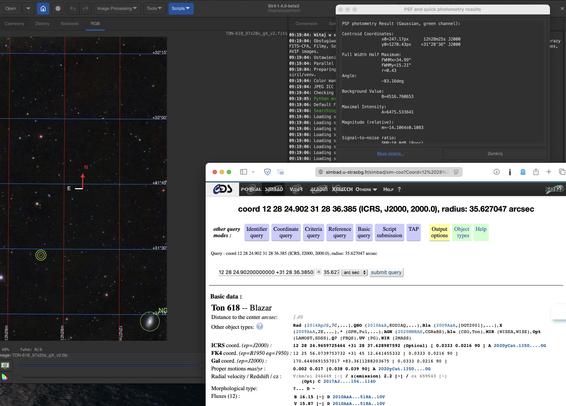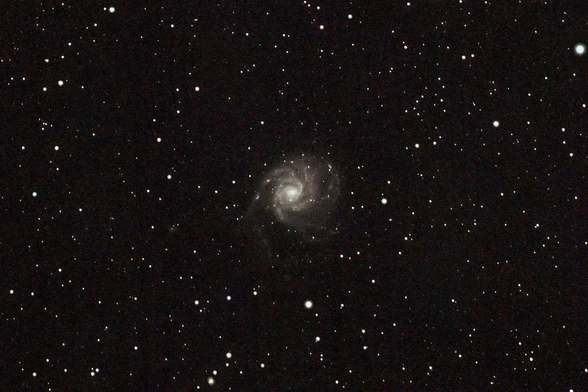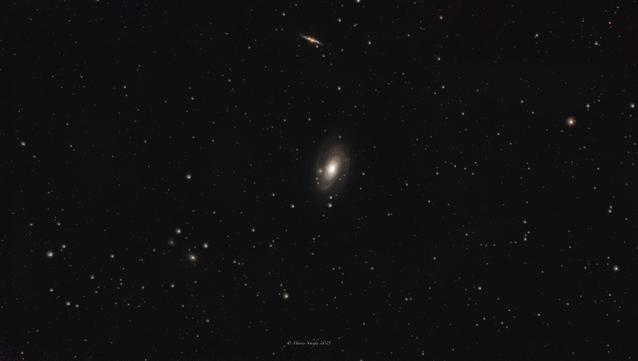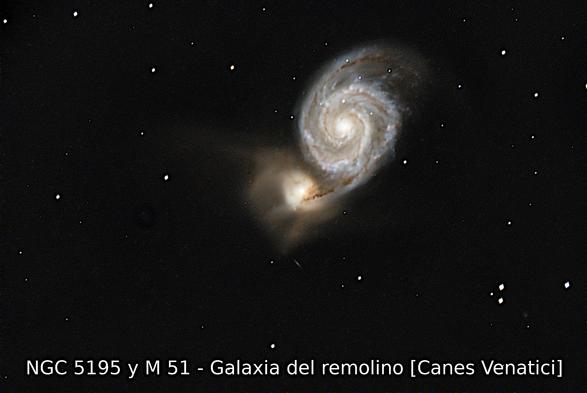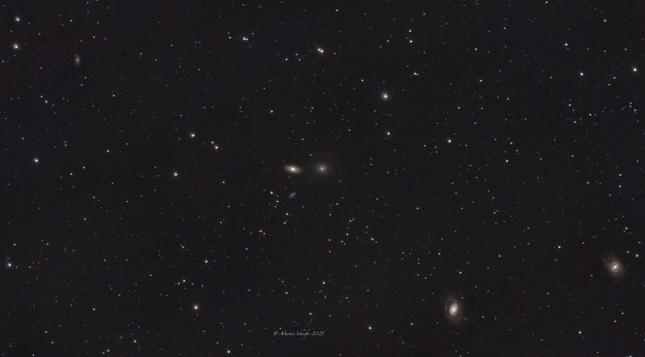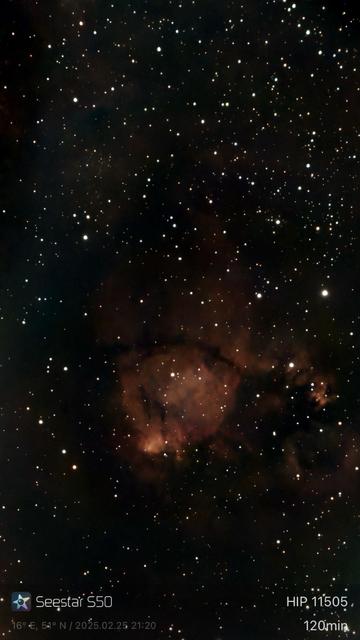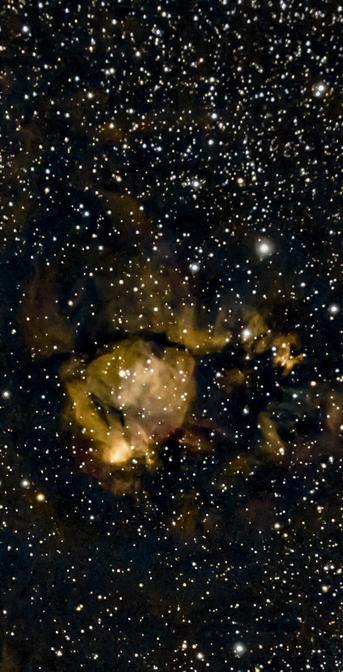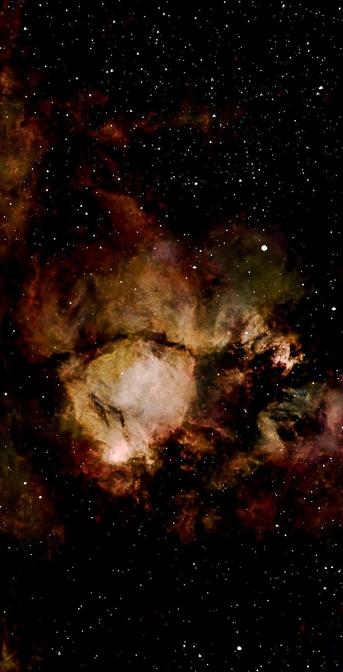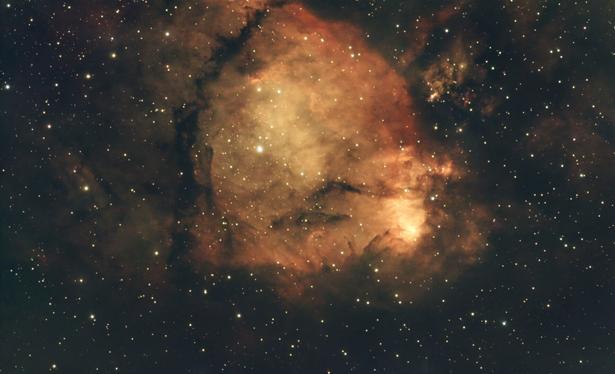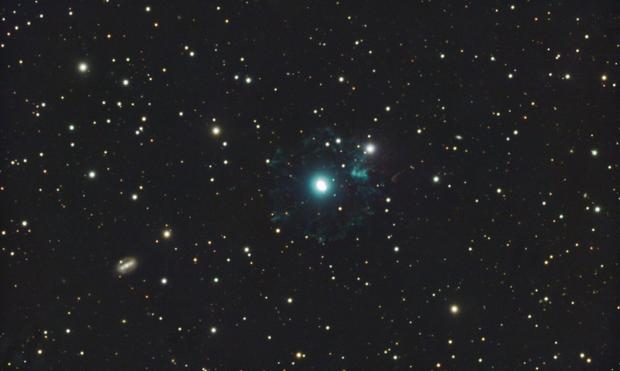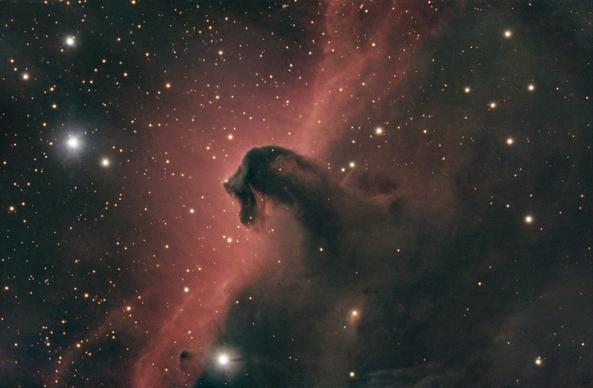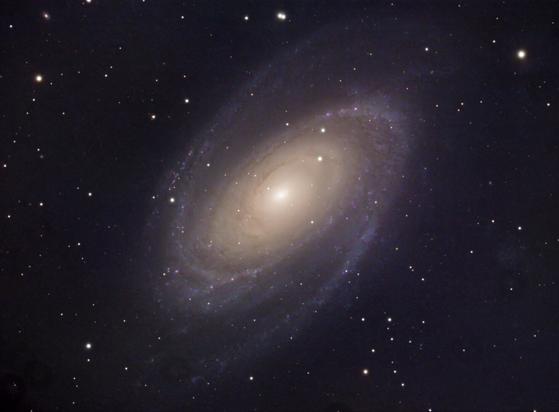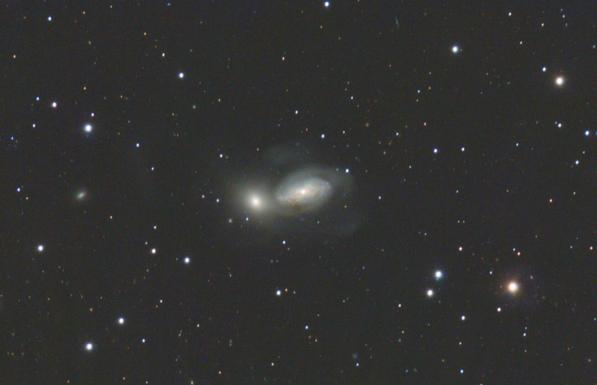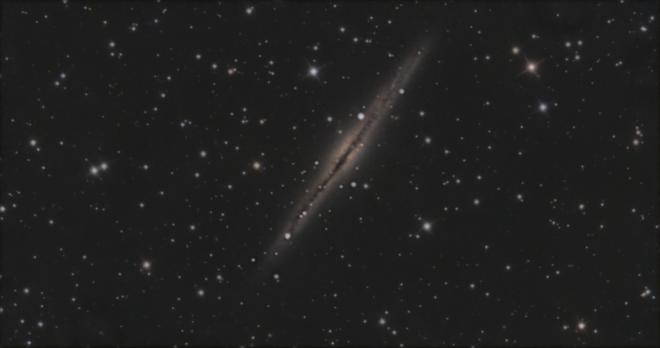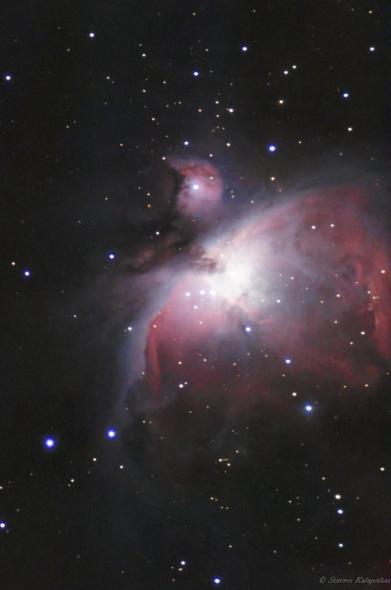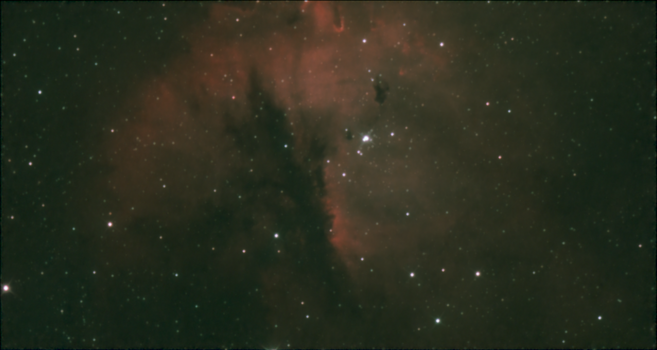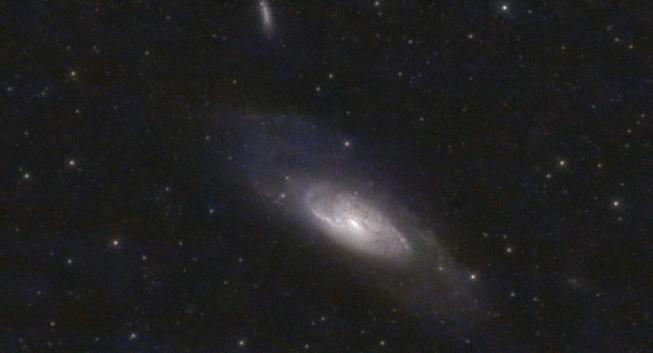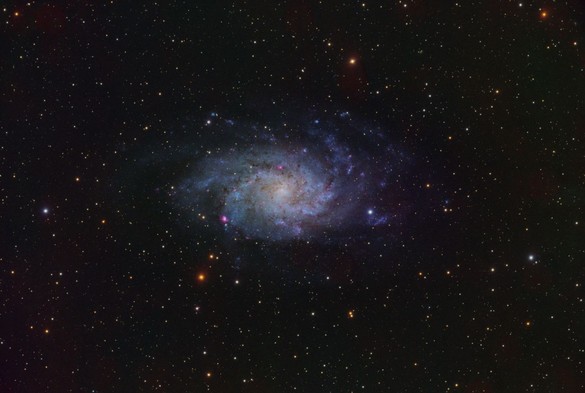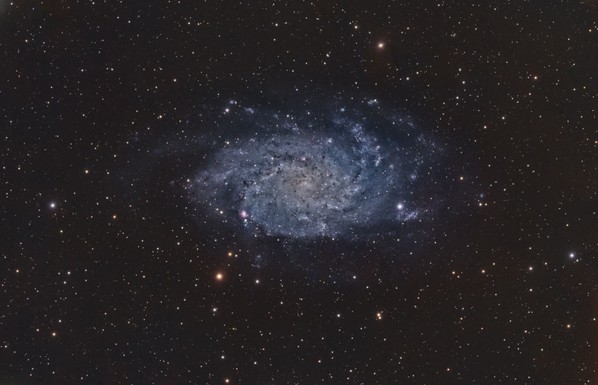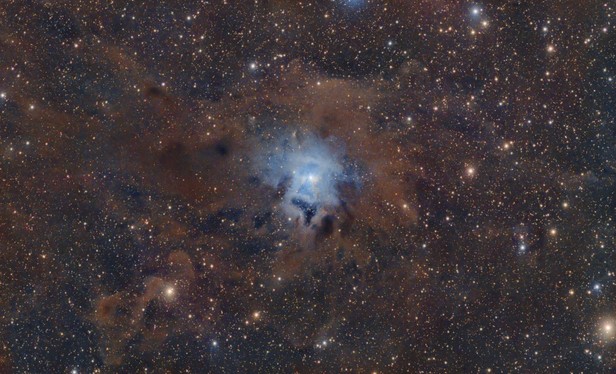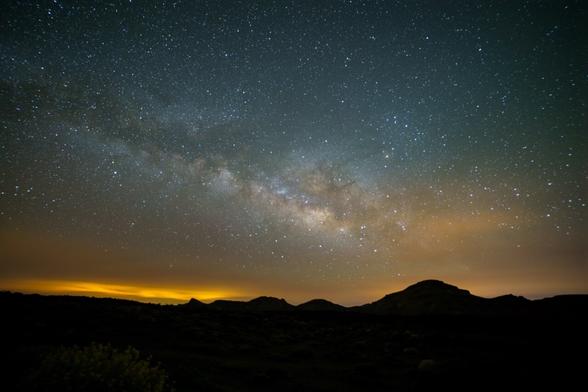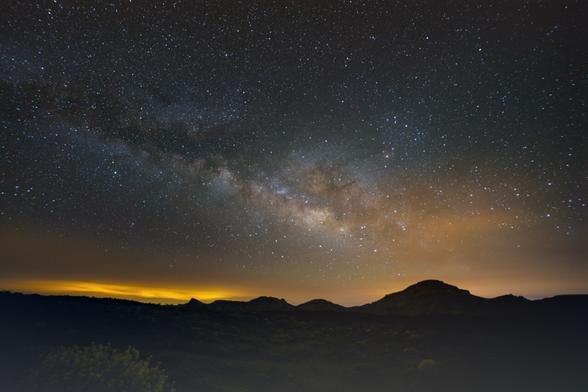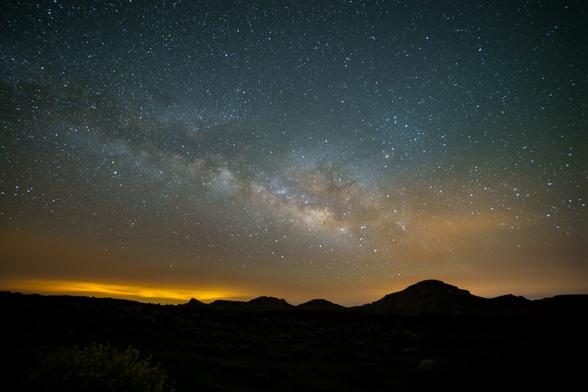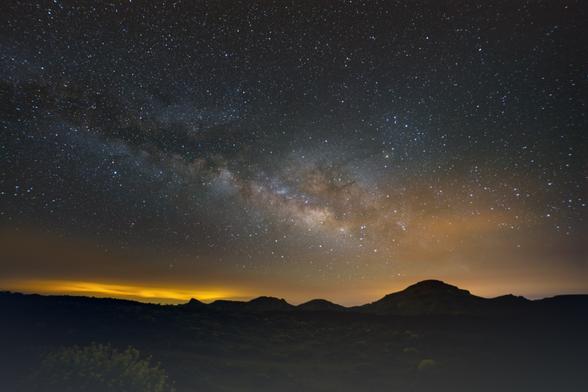Gdzieś coś przeczytałem, coś sprawdziłem, zastanowiłem się, doczytałem, pomyślałem i stwierdziłem, że może się uda.
97 klatek po 20 sekund każda złożone w jedno zdjęcie.
Po samym złożeniu nie zauważyłem interesującego mnie obiektu, ale gdy zrobiłem Backgroud Extraction, Denoising w GraXpercie to… chyba jest! Trochę edycji, zmian i…
Z dużą dozą prawdopodobieństwa 🫣😉oto TON-618 - kwazar.
Wikipedia:
„TON 618 (skrót od Tonantzintla 618) – kwazar zlokalizowany na granicy gwiazdozbioru Psów Gończych i Warkocza Bereniki, z przewidywaną odległością współporuszającą się około 18,2 miliarda lat świetlnych od Ziemi[1], światło przez niego emitowane obserwowane obecnie na Ziemi pochodzi sprzed około 10,4 miliarda lat. Posiada jedną z najbardziej masywnych czarnych dziur, jakie kiedykolwiek udało się zaobserwować, o masie 66 miliardów mas Słońca. Czarna dziura o takiej masie jak TON 618 posiada promień Schwarzschilda mierzący 1300 j.a. (średnica około 390 miliardów kilometrów, ponad 40 razy większa od orbity Neptuna)”[2]
#astronomia #astrofotografia #kosmos #astrophotography #astronomy #universe #siril #graxpert
[1] ryje banię 😉🫣
[2] https://pl.wikipedia.org/wiki/TON_618

